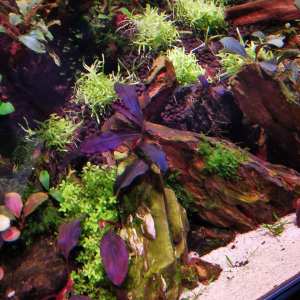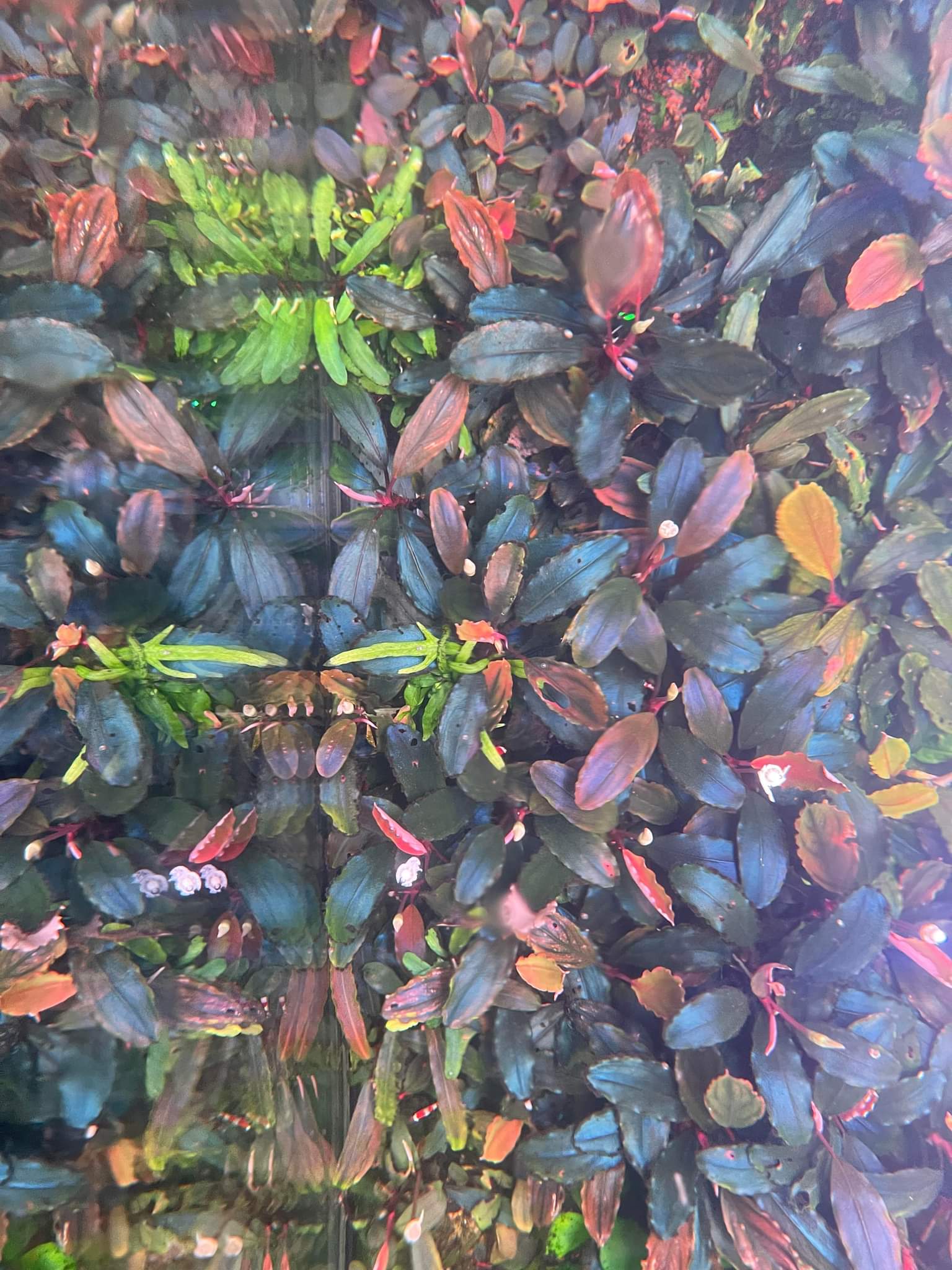
The jewel of Borneo
Bucephalandra is considered by many to be amongst the most beautiful, varied and rare species available in the hobby, stunning colorations, stardust patterns and a wide range of leaf shape make this epiphytic plant heavily sought after by Aquascapers and aquatic plant collectors alike.
However Bucephalandra’s are extremely difficult to identify accurately, with many of its varieties having color morphic capabilities depending on it’s environmental factors. This page is my way of keeping track of the species I currently have that has been identified and verified through multiple sources.
While I do have un-identified common Bucephalandra’s, my collection focuses more on the “Series” varieties and the “Named” varieties of Buces. The “Series” varieties refers to the Brownie Ghost set and it’s identification through the year in which it was discovered (2011,2012,2013,2014,2015), the “Named’ varieties refer to a group of stable and verifiable variety such as “Arabesque”, “Amanda”, “Majestic” etc.



Sp. Black Ventii “The Black Prince”
Medium in size and stunning to behold, ‘The Black Prince‘ of the royal Bucephalandra line, this is one of the truly rare species and is absolutely a must have. In Asia its absolutely a collectors item, rivalling the prestigious and sought after BG 2011.
Red rhizome and star speckle design on it’s leaves when placed in high lights, this species doesn’t seem to grow in compact clumps, fantastic as showpiece items and focal points for Aquascape.
Sp. Brownie Ghost “El Nino” 2013
El Nino ‘Little Boy’ is one of the smaller leafed “Series” variation of the Brownie ghost family, lesser known compared to it’s sibling Brownie Ghost 2011 but definitely should NOT be overlooked.
This variety sports multi colored leaves and a ‘blush’ red outer rim pattern, remains small and displays this form of ‘variegation’ under good to optimal conditions. Like all Brownie this variety can range in form and color based on condition but will always show a spectrum of colorations from metallic green/blue to deep purple and maroon.






Sp. Arabesque
large leaf with unique striation skeletal like patterns. Unlike Bucephalandra ‘Skeleton King’ the Arabesque does not struggle growing submersed and retains its patterns and coloration once fully converted. Colors range from deep metallic teal to purple with red hues.
Under ideal conditions the skeletal striation displays different shades to the rest of the leaf, incredibly complex and stunning aesthetic make the Arabesque variety highly sought after. While most rare hunters aim to collectors “The Series” varieties, the arabesque remains a favorite for hobbyist across Asia and Oceania.
Sp. Brownie Ghost 2011 “The King of Bucephalandra”
The most famous Bucephalandra you’ve never heard of….it’s rare, it’s beautiful and the aquatic plant hobby the world over all want to get their hands on this variety. Extremely stable and resilient in it’s morph and coloration, the BG 2011 retains its deep purple colorations and star dust pattern under most healthy conditions- one of its most prized properties amongst many other.
Under optimal lighting, nutrients and conditions this variety will reward it’s keeper with something downright unearthly, it’s leaves become a dark purple with dark blue shade while retaining it’s star dust patterns and to top it off….it becomes somewhat metallic in it’s ability to reflect light.






Sp. Brownie Ghost “Helena” 2014
Helena 2014 the “Grey Queen” has a unique purple/grey coloration with stardust patterns on its leaves, much like all its BG relative Helena is extremely rare a collector pieces looking to complete the “Series” infinity gauntlet.
It is almost impossible to capture the true beauty of this variety, it’s coloration is one of the most complex I’ve ever seen- you can describe the leaf coloration as grey, blue, purple, ashy, silver and metallic and you would be correct! add to that the stardust pattern trait shared within the Brownie Ghost variety.
It should be noted that there are two varieties of Brownie Ghost “Helena” 2013 and 2014, yes! this means there are two Brownie ghost variety that occupy the 2013 moniker (El Nino & Helena).
Sp. Royal Blue “Sapphire of Kalimantan”
The color blue is the rarest color in nature, from flowers to precious stones the wilds of Indonesia is home to many rare colorations that has kept ecologist, biologists and now hobbyists captivated with their beauty and rarity. Discovered in 2019 in west Kalimantan: Bucephalandra Sp. “Royal Blue” is one of the old world species of Bucephalandra NOT originating in from Borneo, a stunning variant with metallic sheen finish on its leaves and as it’s name suggests- a blue reflective shine when kept in optimal conditions.
New leaves appears red and pinkish in color and go through a range of colors before finally settling to it’s complete form of metallic Royal Blue sheen, however manipulations in conditions has been observed to show more drastic colors in this variant, displaying colors such as orange, striated patterns, purple and dark maroon. The name “Royal Blue” was coined as its trade name as early as 2020, before it was known as Silat Hulu, after its origin.
While in 2021-2022 all the rage has been around “New World” Bucephalandra, the Sp. Royal Blue has been a staple of any Bucephalandra collectors since it’s discovery in 2019. The variants pictured has been positively Identified by Mr Jeffrey Setiawan Sutanto a prominent member of the Bucephalandra community (Reference).







Bucephalandra Variegated ‘Marble’ Mini
Fairly new to the hobby (around 3-5 years) this is one of the few ‘Exotic’ Bucephalandra strain which are predominantly farmed rather than wild harvested.
While many variants of variegated Bucephalandra exists today in the hobby, the ‘Mini Marble’ variant is popular among hobbyist for its fine leaves and dense bushiness.
This particular variant is not 100% stable in it’s mutation, culling of non-variegated leaves is necessary and ideal conditions are required to sustain a large colony of Variegated Marble Minis in it’s optimal variegated form.
Like all Bucephalandra this variant is easy to keep and propagate but far more demanding to reach optimal form- there is no question however that to the dedicated hobbyist this is one of the most rewarding variant of the new generations of Bucephalandra’s.
Very informative and well prepared, excellent pictures to go with it
LikeLiked by 1 person